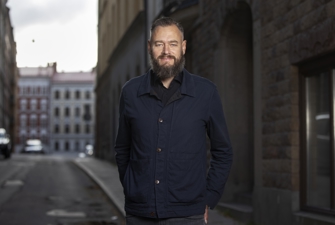Meet the speakers: "Ice hockey fans expect to see fights at games, but the fights are well-controlled"
Swansea University criminology lecturer and ice hockey fan Victoria Silverwood has researched violence in ice hockey for 16 years and has recently spent a full season with an unnamed UK professional team to study fights at ice hockey games. Ahead of her presentation at Play the Game 2024, she gives some insights into her findings.
Can you tell us a little about your research and the access you gained to the team?
As an ice hockey fan, I realised that very little research had been carried out into the violence that we see in most games. As an academic, this was interesting to me from a legal and cultural perspective.
I already had contacts within the sport. They helped me to gain access to a UK-based professional ice hockey team. I am not naming the team, but it was in the UK Elite Ice Hockey League. I was with them for a whole season. On the team bus and the players’ bench, in the dressing room, at training. I was given full access to the players, a lot more than I expected. I became part of the furniture.
Did the players you spent time with get into fights?
Yes, they got into fights. Ice hockey fans expect to see fights at games. A certain amount of violence has always been part of the game.
The fights are well-controlled. There is a whole set of unofficial rules that the players follow. It officially becomes a fight after players drop their gloves. If one of them falls over or if a player signals that they have had enough, that is normally the end of it. The officials will move in if they believe one player wants to end it.
Do the participants aim not to hurt each other?
No, they do intend to hurt each other. The fights are not there for entertainment. It’s like a pressure valve that is released. But there are rules. They won’t do things like eye-gouging or hair-pulling, things they know are not acceptable.
There was an entertainment aspect to fighting in the past, but today most fights break out due to tension in the game. Teams used to have players called ‘enforcers’ who were there to fight, but today each player must possess all-round skills.
If ice hockey fights are real, why isn’t law enforcement involved? If a similar fight happened in public, the participants would probably be arrested.
This is something that has been formed by case law and is in common with all other contact sports. The principle is that as an ice hockey player, you consent to a certain level of violence.
The general understanding that applies to contact sports has been expanded to include a certain amount of violence which can be punished within the laws of the game. This is part of ice hockey culture, and the courts don’t generally want to get involved.
Do you see ice hockey violence as a big problem?
As somebody who watches the sport, I’m conflicted. I don’t think that the biggest problem in ice hockey is the fighting. A far greater issue is the injuries that can occur.
This is a high-speed contact sport that takes place in an enclosed environment. To me, the biggest safety concern is head injuries resulting from legitimate play.
There’s even evidence to suggest that more head and stick injuries occur when fighting is outlawed when there isn’t any way to release the pressure. In such circumstances, more players will try to get away with foul play and hope the referee doesn’t notice.
Even if the fighting is harmless, doesn’t it send out the wrong message to society?
That’s an interesting question. When he was younger, I used to take my son to watch ice hockey and used the game to explain to him that if you do something wrong you are punished by being given time in the penalty box. Then you make up, shake hands and get on with the game. Justice is served by the time penalty.
Doesn’t this imply that people can settle their differences through violence?
Yes, that is a valid point. However, there’s a lot less violence on the fringes of ice hockey than in some other sports. Fans of opposing ice hockey teams don’t generally fight.
The link with spectator violence, including domestic violence is high in many sports but it isn’t in ice hockey. It’s as if there is some kind of catharsis in being able to watch and engage with the fight.
What do the ruling bodies say on the issue?
It is very much accepted as part of the game. Some time ago a new rule was introduced called the instigator rule, which means that in addition to the five-minute penalty that both combatants are given for fighting, the player perceived to have started a fight is given a twelve-minute penalty.
However, the rule isn’t always applied fairly. The player who starts the fight is not necessarily the player who drops the gloves first. Often this is in retaliation for an illegal action hat the referee did not notice.
So, you are pretty much okay with the violence?
I have a problem with the fact that contact starts in hockey at a very young age. I don’t think that children are able to consent to that.
But I think it’s important to society that we allow people to consent to contact under proper rules. It is important to allow adults to make decisions about what they want to do, and which sports they feel comfortable being involved in.
The 16 years I have spent researching the game have allowed me to maintain relationships with the players even after they retire from the sport, and I have recorded that players often question their consent to some aspects of the sport long after they finish playing, particularly as more awareness about the long-term effects of head injuries and concussion is understood.
It is also important to recognise the difference between legitimate violence within contact sports and things that go beyond that. In my work, I have tried to define violence, and the definition is broader than many people would think. It extends beyond fighting.
What kind of changes would you like to see in the game?
There are a lot of changes that need to be made that don’t involve the complete elimination of fighting.
Head injuries are the thing we really need to deal with first and foremost. Problems in hockey are similar to rugby in terms of concussion. This is the biggest long-term threat to health. Brain injury can be triggered by repeated legitimate contact that isn’t generally seen as problematic.
I also think that we need to understand ice hockey’s cultural impact on players.
Like in many sports, athletes have historically been dependent on opioid painkillers to play and the long-term impact this has on drug and alcohol use is problematic. In addition, there can be mental health implications from retirement that can lead to unhealthy coping mechanisms and even suicide.
I’d say it is more important to address these problems.
Victoria Silverwood is a criminology lecturer at Swansea University, UK.
She will take part in the session 'Rights and representation: What is an athlete worth?' on Wednesday 7 February.
Play the Game 2024 will take place in Trondheim, Norway, on 4-7 February 2024.



